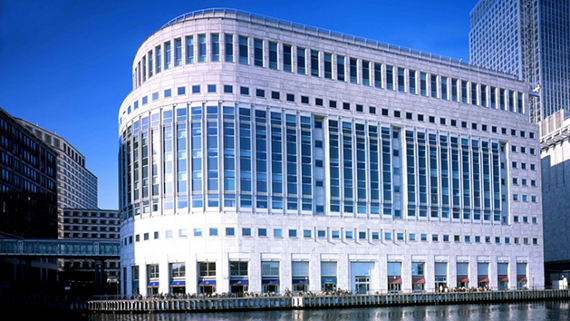“We are moving from a fragmented portfolio of 800 office buildings to 200 by 2030, so there is a lot of coordination we all need to do.”
Newly appointed government chief property officer, Janet Young, is the latest mandarin to be tasked with simplifying the government’s estate. Young has joined the Cabinet Office from the British Council, the UK’s international organisation for cultural relations, where she was global director of estates.
Young heads up the Government Property Profession, a network of around 2,000 members responsible for managing central government property. She also works for the Office of Government Property (OGP), which sets the overarching strategy for the government’s estates strategy. The OGP, led by director general Mike Parsons, replaced the former Government Property Unit in 2017.
Young comments: “I have a number of objectives. First and foremost I want to make sure the government estates strategy is implemented and is a success – we have huge ambitions for this, not just financial benefits but also for the workplace for civil servants in the future.”
Over the past few months, the government has taken additional steps to manage its estates strategy more effectively. As well as hiring Young, it also launched a new department in April, the Government Property Agency (GPA), to implement the Government Hubs programme.
“There is a really good track record for government achieving these initiatives and with the establishment of the GPA we can build on that record.
As part of the hubs programme, launched in June 2016 the government plans to move thousands of public sector jobs outside London by 2030. Civil servants will be consolidated into around 20 hub locations around Britain.
Currently, the GPA is run by Parsons as interim chief executive, but a recruitment process is underway to find a permanent head.
Meanwhile, last month, it announced a new strategy to save around £3.6bn over the next two decades by reducing its property estate. Young explains: “The £3.6bn target relates to overall savings, so if we sell a building and we own the freehold we get a capital receipt and cash from the sale – but we also save on ongoing running costs including rent and utility bills. That saving can be quite considerable; we have saved so far hundreds of millions from annual running costs.”
The savings will come from work carried out by the GPA, primarily from office disposals. “We launched the GPA to deliver the elements of estate strategy that relate to general-purpose buildings, so office buildings and warehouse and storage facilities. They are focusing on this.”
“The £3.6bn will come from the work the GPA is doing. It relates very much to annual running cost savings and £2.5bn relates to savings from our hubs programme.”
In London, the government is set to imminently open a hub in Canary Wharf, where it has leased 542,000 sq ft at 10 South Colonnade.
The government has also announced plans to open hubs in Croydon, South London, as well as in Edinburgh, Cardiff and Belfast.
Parallel goals
Previously, Whitehall had also previously set out plans in 2015 to raise £5bn in capital receipts by 2020. So far, it has raised £1.7bn by selling more than a thousand buildings. This figure relates to sales during both the 2015-16 and 2016-17 financial years.
The government plans to publish a report at the end of the year detailing its land and property disposals for 2017-2018.
Despite still being some way off its stated goal of £5bn and the challenges of finding surplus land to dispose of, Young is upbeat. “There is a really good track record for government achieving these initiatives and with the establishment of the GPA we can build on that record. We are on track to reach £5bn by 2020.”
The strategy is not just about reducing the number of buildings; it is about transforming the way we work and our workforce and driving forward a modern and more flexible workspace
When it comes to incentivising individual government departments to deliver sales, Young declines to comment on exactly how much share of the cash raised they absorb. She says: “This is decided on an individual basis but takes into consideration how much departments may use for re-investment and their transformation programmes.”
In addition, each government department has a property leader from the GPA who is responsible for implementing the property strategy for their government department.
Talent focus
Meanwhile, Young’s other focus will also be on growing the government’s wider property team, which comprises around 4,500 members of staff, including 70 in the OGP and 140 in the GPA.
“As head of the property profession in government, one of my real focuses will be around growing our talent in property and particularly making sure that we attract and retain apprentices and graduates and focus on supporting and developing our existing property professionals.
“We are growing– across the wider property function in government there are a number of property teams in government who will manage office accommodation but there are also a number of teams that focus on specialised assets such as courts and prisons.”

Despite the headline grabbing targets, Young insists the government is also looking to create a more modern and efficient workplace for the civil service.
“The strategy is not just about reducing the number of buildings; it is about transforming the way we work and our workforce and driving forward a modern and more flexible workspace for civil servants so they can work more productively and effectively. That has been the real driver for what we have done so far.”
Whether the government achieves either its financial goals or its vision for the civil service of the future remains to be seen. However, recent moves to increase pressure at the department level appear to be a step in the right direction.
To send feedback, e-mail anna.ward@egi.co.uk or tweet @annaroxelana or @estatesgazette











